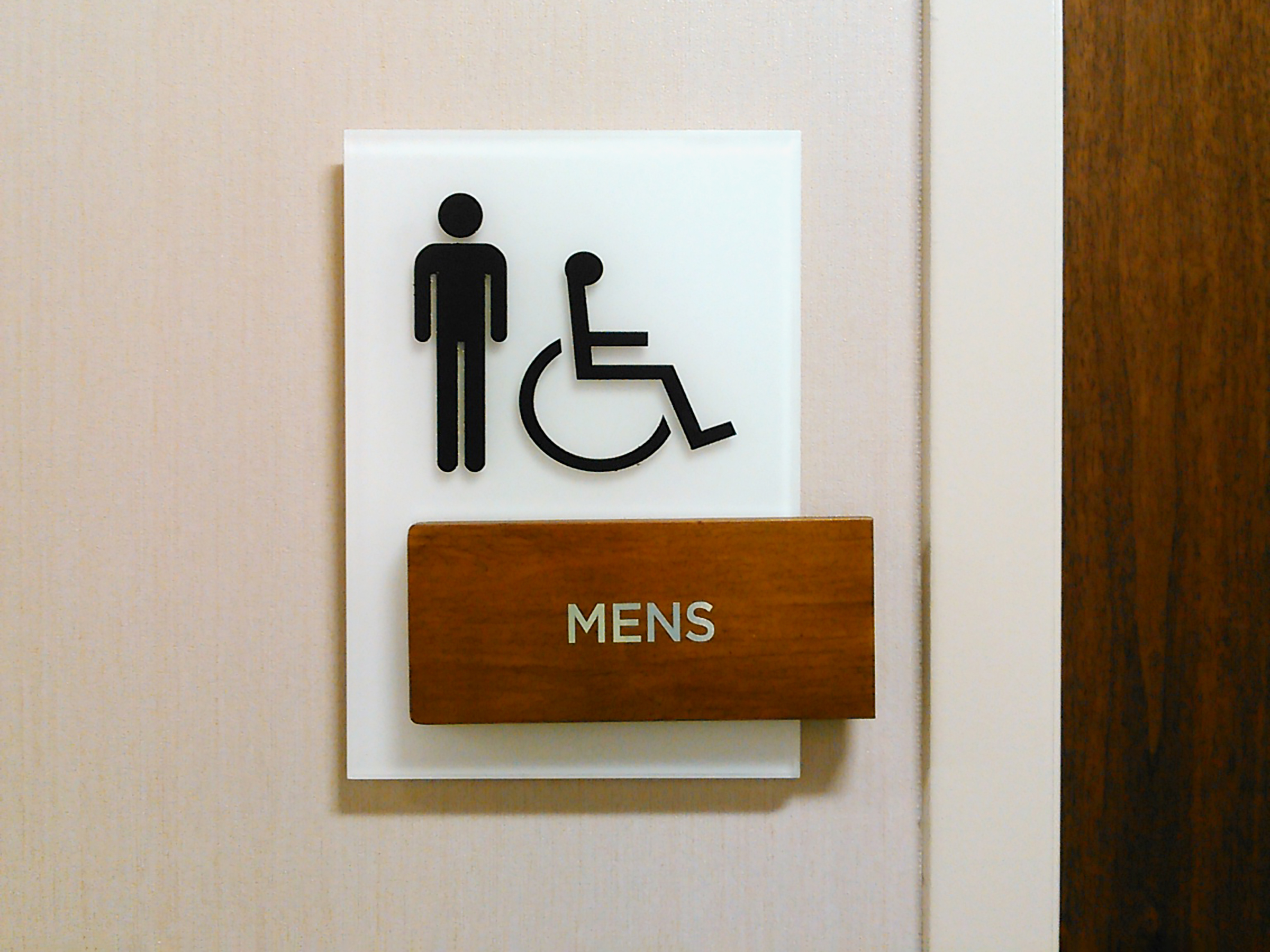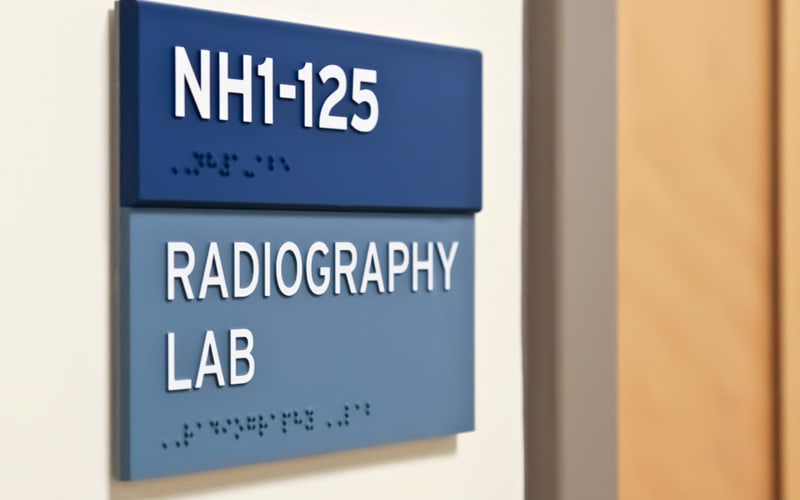Exploring the Trick Attributes of ADA Signs for Boosted Accessibility
In the world of accessibility, ADA indicators serve as quiet yet powerful allies, making certain that spaces are accessible and inclusive for individuals with impairments. By incorporating Braille and responsive components, these signs damage barriers for the visually damaged, while high-contrast color plans and understandable fonts cater to varied visual requirements.
Importance of ADA Compliance
Making sure conformity with the Americans with Disabilities Act (ADA) is critical for fostering inclusivity and equivalent accessibility in public rooms and work environments. The ADA, established in 1990, mandates that all public facilities, employers, and transportation services suit individuals with specials needs, guaranteeing they appreciate the same legal rights and opportunities as others. Compliance with ADA requirements not just meets legal responsibilities yet additionally boosts a company's credibility by showing its dedication to variety and inclusivity.
One of the vital elements of ADA compliance is the implementation of obtainable signs. ADA indicators are designed to make certain that people with handicaps can quickly navigate through structures and rooms.
In addition, adhering to ADA laws can alleviate the risk of potential fines and lawful effects. Organizations that stop working to adhere to ADA guidelines might encounter fines or lawsuits, which can be both damaging and economically troublesome to their public picture. Hence, ADA compliance is indispensable to promoting a fair atmosphere for everyone.
Braille and Tactile Aspects
The incorporation of Braille and tactile aspects right into ADA signage symbolizes the concepts of accessibility and inclusivity. It is normally positioned under the corresponding message on signs to ensure that individuals can access the information without visual aid.
Tactile aspects extend past Braille and consist of elevated symbols and characters. These parts are created to be noticeable by touch, enabling individuals to identify space numbers, washrooms, exits, and various other critical locations. The ADA sets certain guidelines concerning the size, spacing, and positioning of these responsive components to maximize readability and make sure consistency throughout various settings.

High-Contrast Shade Systems
High-contrast shade systems play a crucial function in enhancing the presence and readability of ADA signage for people with visual impairments. These plans are vital as they take full advantage of the distinction in light reflectance between message and background, making sure that signs are quickly discernible, even from a range. The Americans with Disabilities Act (ADA) mandates making use of details shade contrasts to fit those with minimal vision, making it an important aspect of compliance.
The efficiency of high-contrast shades hinges on their capacity to stand apart in numerous lighting conditions, including dimly lit environments and locations with glow. Normally, dark text on a light history or read more light message on a dark background is utilized to attain ideal comparison. Black message on a white or yellow background supplies a raw aesthetic distinction that helps in quick recognition and understanding.

Legible Fonts and Text Size
When considering the style of ADA signs, the selection of legible font styles and proper text dimension can not be overemphasized. The Americans with Disabilities Act (ADA) mandates that typefaces need to be sans-serif and not italic, oblique, manuscript, extremely ornamental, or of unusual kind.
The dimension of the message additionally plays an essential function in ease of access. According to ADA guidelines, the minimal text elevation must be 5/8 inch, and it ought to increase proportionally with watching distance. This is especially important in public rooms where signage requirements to be read quickly and properly. Consistency in message size contributes to a natural visual experience, assisting individuals in navigating environments effectively.
Additionally, spacing in between letters and lines is indispensable to clarity. Appropriate spacing protects against characters from showing up crowded, enhancing readability. By sticking to these criteria, designers can dramatically enhance access, guaranteeing that signs serves its intended function for all people, despite their visual capacities.
Effective Positioning Strategies
Strategic positioning of ADA signs is important for maximizing availability and guaranteeing conformity with lawful check my blog standards. Correctly located indicators assist people with disabilities efficiently, helping with navigation in public spaces. Key considerations consist of exposure, elevation, and proximity. ADA standards specify that indicators need to be placed at an elevation in between 48 to 60 inches from the ground to guarantee they are within the line of view for both standing and seated individuals. This common elevation range is vital for inclusivity, allowing wheelchair users and individuals of varying elevations to access details easily.
Furthermore, indications should be positioned nearby to the latch side of doors to enable easy identification prior to entrance. Uniformity in indication positioning throughout a facility boosts predictability, lowering complication and improving general customer experience.

Verdict
ADA signs play a crucial duty in promoting availability by incorporating functions that deal with the demands of people click here for info with impairments. Integrating Braille and responsive components guarantees essential information comes to the aesthetically damaged, while high-contrast color pattern and understandable sans-serif fonts improve exposure throughout numerous lights conditions. Reliable positioning strategies, such as suitable installing heights and calculated locations, even more assist in navigating. These aspects jointly promote a comprehensive environment, highlighting the value of ADA conformity in making sure equivalent gain access to for all.
In the realm of ease of access, ADA signs offer as quiet yet powerful allies, making sure that spaces are accessible and comprehensive for people with handicaps. The ADA, established in 1990, mandates that all public facilities, employers, and transport solutions accommodate individuals with disabilities, ensuring they appreciate the exact same rights and possibilities as others. ADA Signs. ADA indications are developed to ensure that people with impairments can easily browse with structures and spaces. ADA standards state that signs need to be placed at a height in between 48 to 60 inches from the ground to ensure they are within the line of view for both standing and seated individuals.ADA indicators play an important function in promoting access by integrating attributes that deal with the demands of people with disabilities